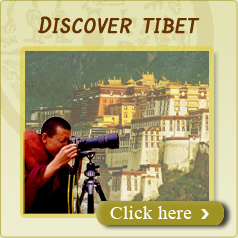Gyantse

-
Province:Tibet (Chinese: 西藏, Pinyin: Xī Zàng)
-
Population :2,840,000
-
Area :1,228,400 square km (474,300 square mile)
-
Overview:With an average elevation of 4,900 metres (16,000 ft), Tibet has long been a favored destination for tourists from around the world.
Overview
Gyanse, in the Nyang-chu valley 254km south-west of Lhasa, is famed for the the Gyantse Kumbum, the largest chorten (stupa) in Tibet. The Chorten is a magnificent tiered structure that has only one ruined and remote contemporary in the Buddhist world at Jonang. It's worthwhile spending a couple of days exploring Gyantse.
Gyantse has a horse racing and archery festival in the summer. It is traditionally held in the middle of the fourth lunar month (June of July). Most people travelling in hired vehicles heading to the Nepali border pass through Gyantse. It's also possible to visit the town independently.
Know More
Between the 14th and 15th centuries, Gyantse emerged as the center of a fielfdom with powerful connections with the Sakyapa order. The reason why people build a town there is because of the trade in wool. The location was good because Gyantse was on the road to India.
By 1440 Gyantse's most impressive architectural achievements "The Kumbum and the Dzong" had been completed. Gyantse's historical importance declined from the end of the 15th century, though it continued to be a major centre for the trade of wood and wool between India and Tibet.
Gyantse is often referred to as the "Hero City" because during the British Younghusband expedition of 1904, the 500 soldiers of the Gyantse dzong held the fort for several days before they were overcome by the British forces.
Must See
Yamdrok Lake
The Yamdrok Lake (Tibetan: Yamdrok Yumtso) is one of the three largest lakes of Tibet, it is within Langkamu county, with an area of 638 square kilometers and a coastal line of 250 kilometers.
The deepest point is 60 metres. To the interior of the lake ten or so hilly islands stand independently one from the other which give homes to flocks of wild ducks...more
Kumbum Stupa
Commissioned by one of the early Gyantse princes in 1427, the mystical Gyantse Kunbum (admission to which is included in the entry to Pelkor Chode) is rated by many as the town's foremost attraction. The chorten is packed with exquisite Tibetan sculpture and painting and rises 35m over four main symmetrical floors surmounted by a gold dome. The dome rises like a crown over four sets of eyes that gaze serenely out in the directions of the cardinal points. As you climb upwards through the chapels of the Kumbum you are drawn through progressively higher levels on the Tantric path...more
Dzong Fort
The 14th-century Gyantse Dzong Fort, is worth the stiff 20-minute climb to its upper limits. This is more for the amazing views of Gyantse, the monastery compound at the end of town and the surrounding Nyang-chu valley, than for what is left of the dzong itself, which is not much.
Some of the Dzong's buildings can be entered and explored, sometimes to upper floors, by means of rickety wooden ladders. About midway up through the fort complex is an Anti-British Imperialists Museum featuring a fabulously warped version of the 1904 British invasion. The displays start off with the predictable 'Tibet is an inalienable part of the motherland...'. Entry to the Dzong is via the large gate on the roundabout. You can also enter through the back way from Pelkor Rd via the alley marked 'Lane Castle' ...more
Pelkor Chode
Gyantse is notable for its magnificent Pelkor Chode, the largest Monastery in Tibet.
The Pelkor Chode was commissioned by a Gyantse prince and was an important centre of the Sakya school of Tibetan Buddhism.
The monastery compound in the far north of town of Gyantse, 30 km southwest of Shigatse, which houses both Pelkor Chode Monastery and the Kumbum Stupa, once contained 15 Monasteries. Little remains of them today. They were a particularly interesting collection, however, in that they brought together three different orders of Tibetan Buddhism in the one compound...more










